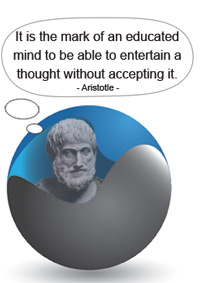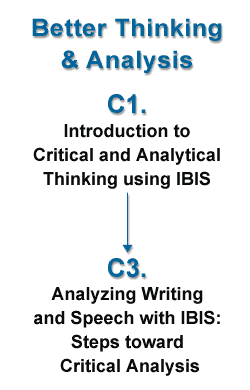Breaking Our Addiction to Problem Solving
“A Great Need”
Out
Of a great need
We are all holding hands
and climbing.
Not loving is a letting go.
Listen,
The terrain around here
Is
Far too
Dangerous
For
That.Sufi Poet Hafiz
Among our society’s many addictions, there is one that threatens to hasten the end of life as we know it: the art and science of problem-solving. We’ve all seen Problem Solving in action. We understand how it works. Indeed, we’re all accomplished Problem Solvers. Perhaps too accomplished. Sometimes Problem Solving just applies a band-aid Solution, as when the Solution simply shifts the Problem someplace else in the system. (The use of title case indicates reference to the current virulent strain.)
Another approach to improving a problem situation is to sit down with others who care about the situation and … talk. Or, mostly listen, actually. Listen for what concerns others have, and for what the group has in common. Listen for the issues that are the most contentious, the ones causing the most tension. As the dialogue progresses participants begin to hear new patterns, and new understandings emerge. Dialogue leads to more robust solutions than Problem Solving.
On the other hand, Dialogue involves more people and takes longer. Participating in dialogue sessions about a complex interdisciplinary problem is mysterious, possibly even frightening. If you’ve participated in planning for a family wedding, you may have some sense of what it’s like to have strong feelings about something that you don’t really understand because it has so many moving parts.
Problem Solving is meant to steer clear of this kind of cognitive dissonance; dialogue is meant to bring the participants to its source. Problem Solving is meant to keep the resolution process happening on schedule and in budget; dialogue … not so much.
The Power of Problem Solving
How does Problem Solving make the process so clear and manageable? The basic steps of the process:
- First, Define the Problem. (This one’s essential! Fail here and you open the door to Chaos!)
- Then Gather All the Data You Can Find about this problem. (It always helps to reach beyond strongly held opinions to actual evidence.)
- Next, if the problem is complex, break it into smaller, more manageable pieces, and solve each of the pieces. (Good old Divide and Conquer.)
- There are lots of versions of this last part, but they boil down to this: make decisions about which Solution is best and how to implement it.
What’s so great about this linear process is that it’s so simple. You just have to do the steps in order, and when you’re done, you’re done! Another big benefit is that, done competently, it always works! You always get a Solution.
Problem Solving Meets Social Complexity
All four of the steps outlined in the previous section have deep flaws when dealing with problems with significant social (as opposed to technical) complexity, but the first step, Define the Problem, is probably behind the most confusion and suffering. It’s also one of the most addictive elements.
Define the Problem. That “the” says the problem is a thing that can be known objectively, like the chair I’m sitting on. And “define” says that the objective thing-ness can be captured, in language, with a definition that lays out the problem’s features clearly, precisely, and completely. In this fictional world, there are no people to have differing points of view about the problem or different understandings of what the “real problem” is. The Problem just is, unchanging and absolute.
Of course, most people don’t believe that problems have this kind of objective existence. However, most people speak and act as if they do, especially here in the United States! In the UK and Europe, for example, most professionals are at least aware of an active and growing branch of operations research called “problem structuring methods”.
“Problem structuring methods (PSMs) are a broad group of model-based problem handling approaches whose purpose is to assist in the structuring of problems rather than directly to derive a solution. They are participative and interactive in character, and normally operate with groups rather than individual clients.”
What’s the Problem? An Introduction to Problem Structuring Methods, by Jonathan Rosenhead
To my knowledge, there is in the US no corresponding academic field devoted to helping groups create a shared understanding of the nature and scope of unwanted situations. Problem structuring isn’t taught in our universities, nor is it supported in our planning, design, or decision-making tools.
This kind of blanket failure to acknowledge that problems are socially constructed points to an extraordinary kind of blindness in our culture. A blindness that hints of a serious addiction to a mechanistic and alienated world view.
It’s like that old joke: “Boy, the food at this place is really terrible.”, “Yeah, I know; and such small portions.”
The corker to our collective oversimplification of the nature of Problems is our overuse of Problem Solving! Virtually all of the institutions that sustain our society and our environment — agencies, departments, and corporations, for example — have fixated on Problem Solving as a kind of process silver bullet, despite the fact that Problem Solving backfires so frequently. Instead of improving undesirable situations, our over-use of Problem Solving aggravates the very conditions it was meant to improve, and leaves a sticky residue of undissolved “Solution” that complicates any further efforts to get to the cracks in the foundation (i.e. the deeper causes of the Problem).
Why We’re Addicted to Problem Solving
An alternative way to approach a complex Problem — let’s call it Dialogue — yields more robust “solutions” because it takes social complexity as seriously as technical complexity. Dialogue seeks broad participation and the long view. It advises you to involve stakeholders early, collectively examine the history, context, and assumptions around the unwanted situation, envision a sustainable future, explore a range of approaches, and reduce risk by pushing promising solutions into prototypes and pilot projects early so their lessons can inform the whole process. Dialogue is both cheaper and better than Problem Solving, but not always faster.
How is it that Problem Solving is so popular if it backfires so often? There are many reasons, at many levels. Here are a few:
- Education and culture only teach us one approach to Problems: Problem Solving. It’s possible to get a PhD in engineering or management without ever questioning the paradigm in which there are Problems, which are generally ‘bad’, and specialists who can make them go away with good Solutions.
- Problem Solving appears to be faster than alternative approaches, because (in principle) it not only tells you when you’ll have Solution but also what needs to be done to get there. Unfortunately, the Solution you get may not be very robust, and it may simply conceal the Problem for a while.
- Our economic system encourages Problem Solving. Quick Fixes are much cheaper and easier to sell than engaging the whole system, taking the long view, and creating a collective commitment to a holistic approach.
- If you are in a position of power, it is much easier to control or influence the outcomes of the Problem Solving process.
- The human brain is better adapted to Quick Fixes than to complex, drawn out inquiries. There is a lot more adrenaline (and other hormones) at play in making a quick either-or decision and jumping into action. Extended multi-stakeholder dialogues require discipline, listening skills, critical thinking, empathy, curiosity and other qualities that must be developed over time and used regularly.
- We are psychologically and socially addicted to Problem Solving. Any time one keeps repeating a behaviour that one can see is not in one’s best interest, it’s likely to be an addiction. I like this reason the best. It encapsulates the other reasons, and points to a simple, practical way out: the very personal and accessible hard work of coping with or breaking an addiction.
Treating the Addiction
So let’s face it, we professionals, we who constitute the institutions that take care of society and environment, have gotten ourselves well and truly addicted to seeing Problems wherever we look, and using our Problem Solving skills and tools to create and implement Solutions. This condition, known as Quick Fix Syndrome, is extremely hard to cure, especially once it affects those who would be leaders, and has lead to the downfall of more than one advanced civilization. This is because the Quick Fix part of the brain gets inflamed and swollen with Confirmation Bias, causing the Take-Time-to-Reflect-on-the-Big-Picture center to shrivel and cutting off blood to the Let’s-Talk-About-It gland, which quickly atrophies, and so on.
In case you think of addiction as a condition that only affects smokers and junkies, you’ve been missing out on one of the most exciting new areas of psychology. There is growing acceptance that behaviors can be just as addictive as drugs, and that behavioral addiction is much more prevalent than substance addiction. (See also “You’re gonna have to face it, you’re addicted to love”, or, on a more serious note, David Brin’s article, “An Open Letter to Researchers of Addiction, Brain Chemistry, and Social Psychology“.)
So how do you break the addiction to Problem Solving?
I’m sure you already know the first step. Admit to yourself that you have an addiction!
Then, just begin to notice when you catch yourself jumping from feeling uncomfortable in a situation to labelling it as a problem, and then automatically thinking about ways to avoid or fix the “problem”. This applies as well when a friend or family member is telling you about a difficult or painful experience. You might respond with a “solution” to their “problem”, but often what is needed is empathetic listening and curiosity about what solutions, if any, he or she is considering.
As an advanced exercise, see if you can notice when an unwanted situation can’t be problematized because there is no possible “solution” for it, such as when a colleague announces “I am surrounded by idiots!”.
It is also very supportive to kicking the Problem Solving habit if you learn to distinguish mere problems from “wicked problems“, and to become familiar with tools for addressing wicked problems. (Note that I didn’t say “for solving wicked problems”!) Expanding one’s range in this way can help anyone deal more gracefully with life’s unsolvable problems.
Finally, what the world needs now is a widespread acknowledgement that we don’t really know how to address wicked problems (myself included!), and that we have a lot to learn in a short time if we want to preserve life as we know it.
Talk to Me!
Thank you for reading this far! This is the first in a series of articles on the general topic of wicked problems and how to deal with them.
Acknowledgement: I’m very grateful to Eugene Kim for (a) conversations that contributed to this article, (b) review and good suggestions about the draft version, and (c) his staunch support over the years that I should be blogging. (Look, Eugene! I did have the time, after all!)















